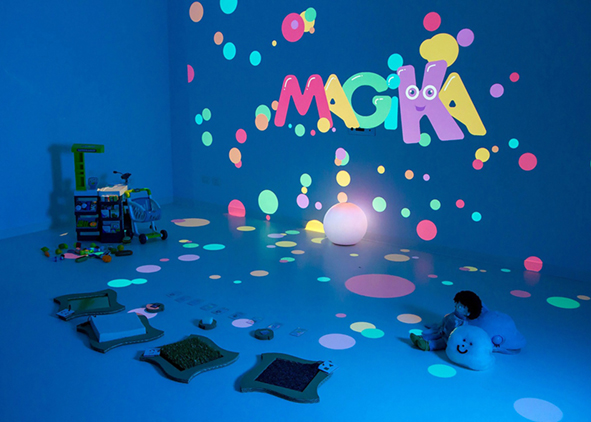The question that emerges from my last assignment is why should we design responsive and interactive spaces, and how might we create these types of designs? Man-made environments have long stayed static and dominated by the visual elements. Integrating interactive components can change the passive relationship between people and space to an active one. Large scale interactive installations stand at the intersection of art, architecture and technology, and the purpose behind can be divided into for creating artistic expressions and functional outcomes. Art projects like the digitized natural environments created by teamLab or Voice Tunnel by Rafael Lozano Hemmer, both mentioned about removing the boundaries between artworks and the audience, co-creation, and reshaping the narrative of the space.
Projects that emphasize the functionality of interactive space discuss the possibilities of expanding tangible user interface to larger scales. A branch of this direction is interactive environments for educational purposes. Multisensorial environments like the Magika room and Social Sensory Architectures both look into how to design interactive spaces that integrate play and inclusiveness for autistic children.
I would like to research about the functionality of interactive space, but also borrow the concept of co-creation and playfulness from artistic projects. Soft material and technology could be a way of making technology approachable. By using soft sensors and actuators, it is possible to make interfaces that embody a more flexible presentation.
Papers on soft sensors and actuators:
- S. Nakamaru, R. Nakayama, R. Niiyama, and Y. Kakehi, “FoamSense: Design of Three Dimensional Soft Sensors with Porous Materials,” in Proceedings of the 30th Annual ACM Symposium on User Interface Software and Technology, New York, NY, USA, Oct. 2017, pp. 437–447, doi: 10.1145/3126594.3126666.
- S. H. Yoon et al., “iSoft: A Customizable Soft Sensor with Real-time Continuous Contact and Stretching Sensing,” in Proceedings of the 30th Annual ACM Symposium on User Interface Software and Technology, New York, NY, USA, Oct. 2017, pp. 665–678, doi: 10.1145/3126594.3126654.
- L. Albaugh, S. Hudson, and L. Yao, “Digital Fabrication of Soft Actuated Objects by Machine Knitting,” in Proceedings of the 2019 CHI Conference on Human Factors in Computing Systems, New York, NY, USA, May 2019, pp. 1–13, doi: 10.1145/3290605.3300414.
- J. Forman, T. Tabb, Y. Do, M.-H. Yeh, A. Galvin, and L. Yao, “ModiFiber: Two-Way Morphing Soft Thread Actuators for Tangible Interaction,” in Proceedings of the 2019 CHI Conference on Human Factors in Computing Systems, New York, NY, USA, May 2019, pp. 1–11, doi: 10.1145/3290605.3300890.



